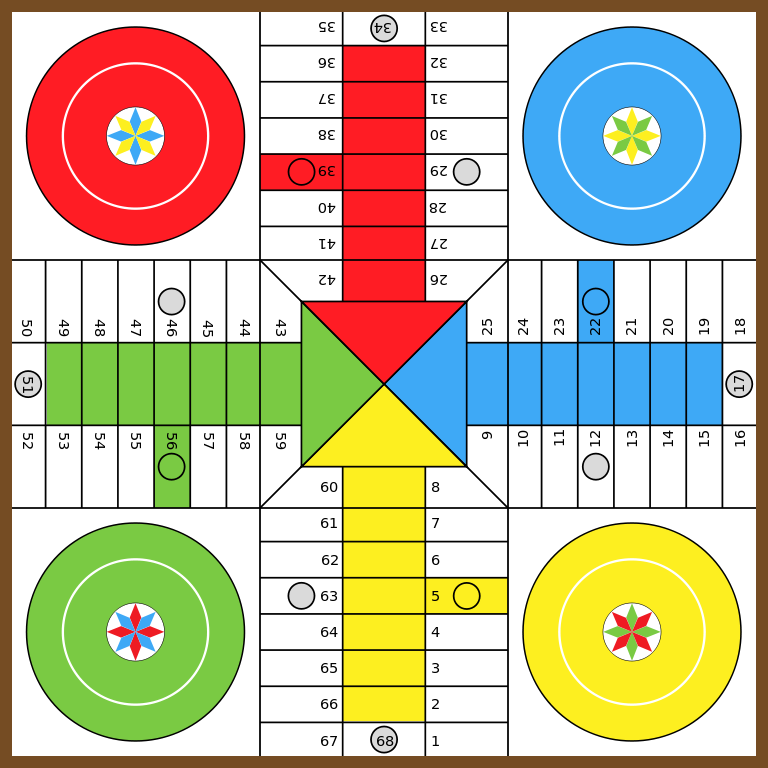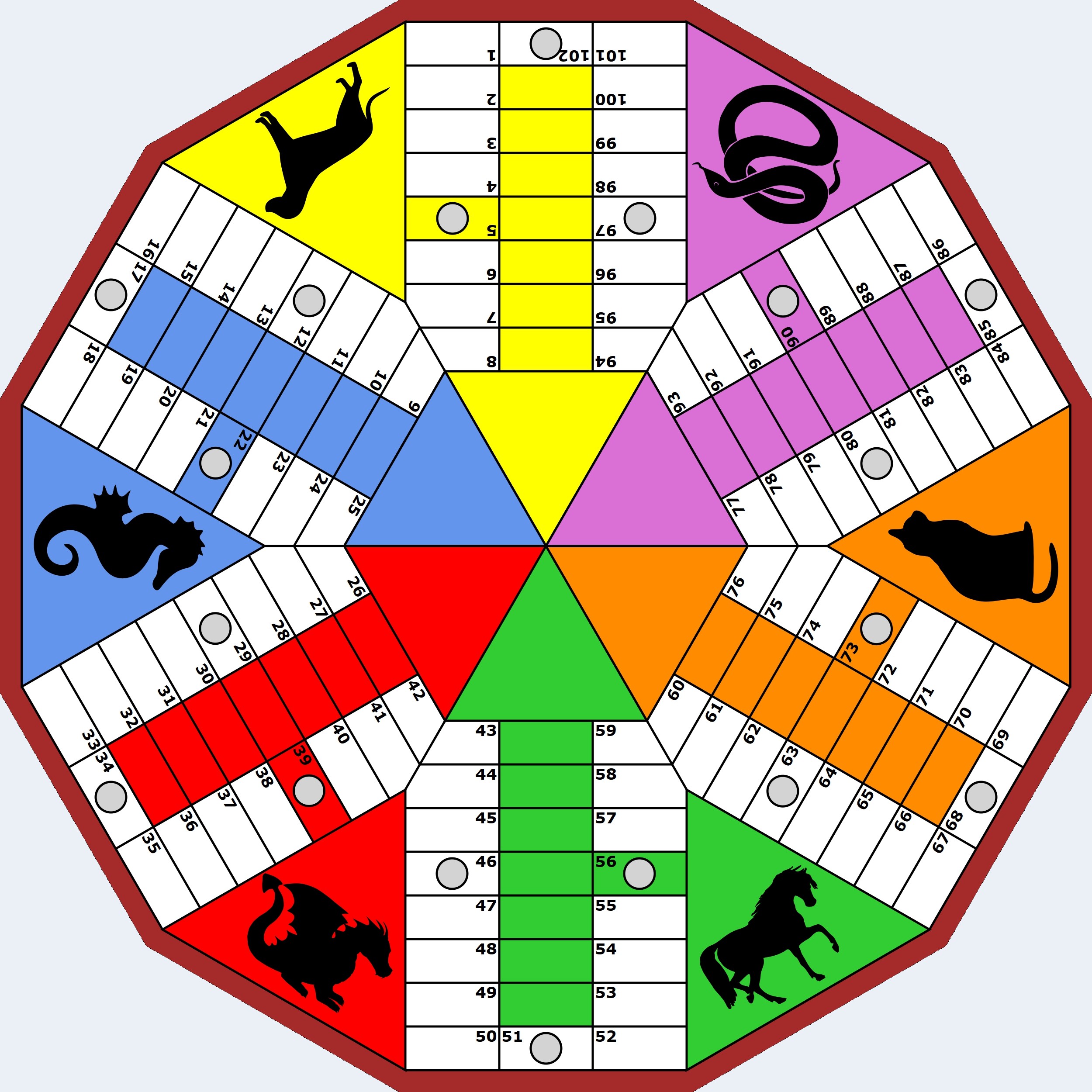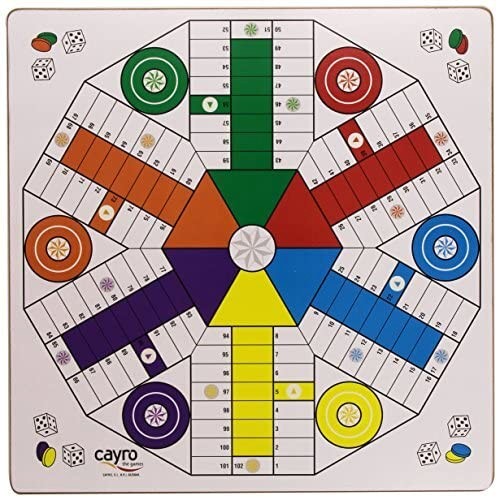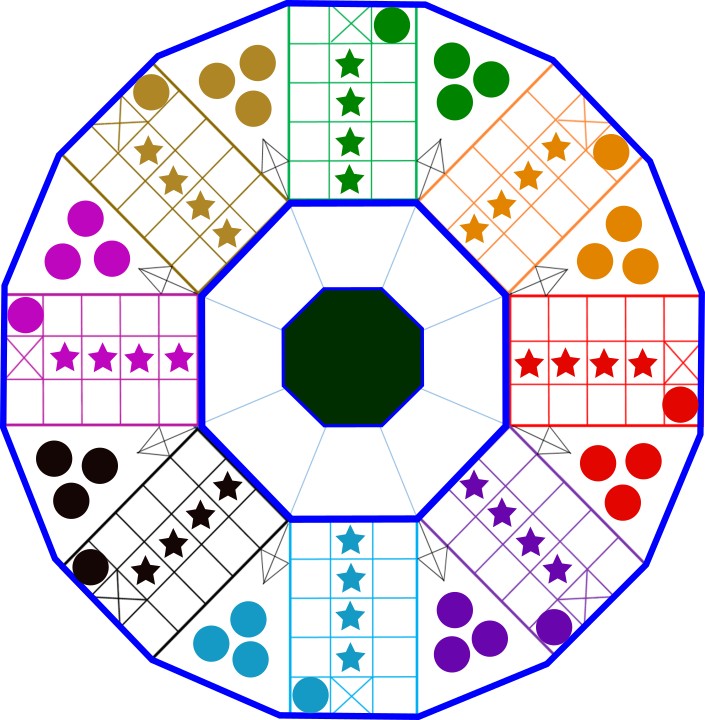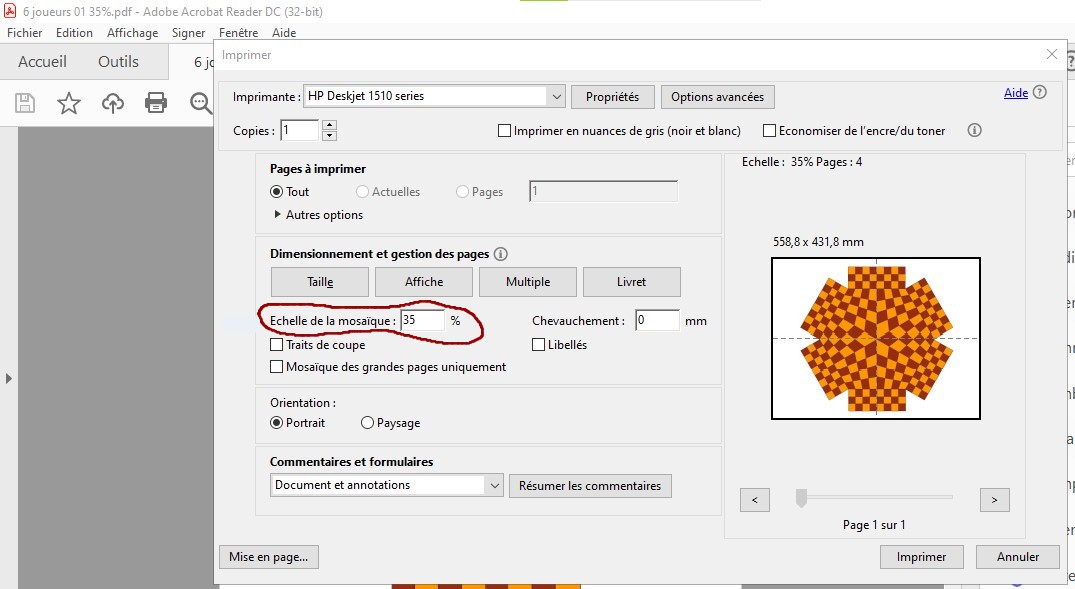
Parcheesi (Ludo) En
Jeux
Goal of the game
In the modern version of Parcheesi, each
player has 4 pawns of the same color (yellow, red, green or blue) which are
initially in an area called House on the game board.
It is made up of 68
numbered squares, 12 of which are safety squares (marked by a circle), on which
all the pawns can move.
In addition, each player has 7 squares of the
color of his pawns and an arrival square (larger square located in the center of
the board) on which only their own pawns can move.
The object of the game
is to arrive before your opponents to get the 4 pawns into the finished square
after having covered the entire game board.
How to play Parcheesi?
All players start the game with all of their pawns in their houses, although
it is possible to start the game with a pawn taken out on the game board.
Before starting the game, each player rolls the dice. The player with the
highest number will start the game.
Players will be able to take out a
pawn only if they roll a 5. This action is obligatory only if there are still
player pawns at home. Only exception, the exit square is already occupied by 2
pawns.
If you play with the Super Parchesi mode with 2 dice you can take
out a pawn if the sum of the 2 dice is equal to 5. For example a 2+3. It is also
possible to take out 2 pawns at the same time, if you draw a double 5.
Normal Parcheesi (with 1 die)
In the classic game of Parcheesi,
the player can move the pawns he has on the game board by rolling the dice.
It is mandatory to advance the exact number of squares indicated by the die
if possible.
If a player rolls a 6, he can start playing again. If all
his pawns are out on the game board, the 6 will be worth a 7.
If you
repeat 3 times in a row (you roll a “6” 3 times), the last pawn moved will
return to its home. Except if no movement has been made or if the last pawn
moved is on the arrival stairs.
Super Parcheesi (with 2 dice)
Super Parcheesi is based on the Ludo rule. By playing with 2 dice, the game
becomes much more strategic.
During a turn, 2 moves can be made either
with the same pawn, or with 2 different pawns (one with each value indicated on
the dice).
If a player rolls a double (same number on the 2 dice), he can start rolling
the dice again (the rule of 6 will not be applied)
If you repeat 3 times
in a row (you draw a “double” 3 times), the last pawn moved will return to its
home.
Except if no movement has been made or if the last pawn moved is on
the arrival stairs.
Example 1:
A player rolls a 3 and a 5.
Normally, he will have to take out a pawn and then he can move any pawn forward
3 spaces.
Example 2:
A player rolls a double 5. He must take out 2
pawns if possible and he will start playing again.
Bridges
A
bridge is formed when 2 pawns of the same color are on the same square. If the
options on the table allow it, it is also possible to form a bridge with 2 pawns
of different colors on a security square.
Bridges prevent the passage of
any other pawn.
If on a square, there are 2 pawns which form a bridge of
the same color of the pawn we are moving, it will be possible to pass over it
but not to occupy this square.
To remove a bridge from the Parcheesi
(with 1 die). One of the players forming the bridge with his pawns must draw a
6.
He will have to open the barrier by moving one of the pieces forming
the bridge if possible. If he has more than one bridge, he can choose to open
the one he wants.
To remove the bridge from the Super Parcheesi (with 2
dice). The same thing happens except that the player will have to draw a double.
It is not allowed during the same turn to undo a bridge and form a new one
with the same pawn.
catches
To capture an opponent's pawn,
you must land on the same square and that it is not on a safe square.
The
eaten pawn will return home and the player who captured it will have to move one
of his pawns forward 20 spaces as far as possible.
If a player rolls a 5
and the exit square is occupied by 2 pawns, one or more of which does not belong
to him, he can eat the last pawn that arrived on this square. In addition, he
will earn 20 points (as with any other capture).
If you are playing as a
team, it is possible to capture your partner's pawn.
Arrival space
If
a pawn has managed to make a complete turn around the game board, it can enter
the arrival staircase.
To successfully fit a pawn into it, the player
must roll the exact number with the dice. Once on the first square, a pawn
cannot be eaten by the opponent.
If a pawn reaches the arrival square,
the player must move
Printable Board PDF This pdf contains a board of 4, 6, and 8 Players

